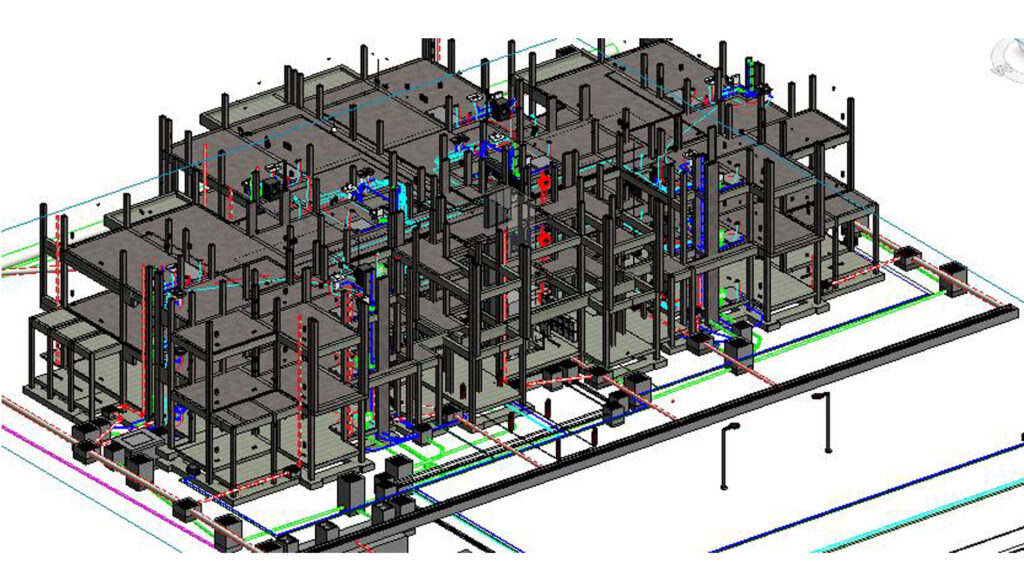In the ever-evolving landscape of construction and architecture, the integration of Building Information Modeling (BIM) services has become a catalyst for transformative change. Among the various facets of construction that BIM touches, its impact on sustainable design stands out prominently. This blog explores the profound influence of Structural BIM Services on fostering sustainability in modern construction practices.
Precision in Planning
The planning stage of construction projects now includes a higher level of precision because of structural BIM technologies. Architects and engineers may examine and evaluate the environmental impact of their designs using in-depth 3D modeling and simulations. By seeing potential for energy efficiency, waste reduction, and eco-friendly materials in the design stage, this degree of accuracy provides the groundwork for sustainable construction.
Utilize our focused on detail services to complete comprehensive project planning. In order to promote successful and seamless project outcomes, we ensure accuracy in design, construction sequencing, and overall project scope.
Material Optimization
One of the key elements of sustainable design is the responsible use of materials. Structural BIM services enable the optimization of material usage through accurate quantity take-offs and analysis. By understanding the exact requirements for a project, unnecessary waste is minimized, and the environmental impact of construction materials is significantly reduced.
Optimize your project’s ecological footprint with our material optimization services. We meticulously analyze and use materials responsibly, minimizing waste and promoting sustainable practices in architectural endeavors.
Energy Performance Analysis
Sustainable design goes hand-in-hand with energy efficiency. Structural Services provide the tools for in-depth energy performance analysis. Designers can simulate the energy consumption of a building, assess the impact of different materials, and optimize the layout for natural lighting. This enables the creation of structures that are not only environmentally responsible but also economically efficient in terms of energy consumption.
Lifecycle Assessment
Sustainability in construction extends after a project is completed. Lifecycle assessments, which take into account a building’s environmental impact from its conception to its use and eventual demolition, are made easier by structural BIM technologies. With an integrated strategy, sustainability is always taken into account over the duration of a structure’s existence.
Collaborative Decision-Making
Sustainable design often involves collaborative decision-making among various stakeholders. Structural BIM service provide a centralized platform where architects, engineers, contractors, and sustainability experts can collaborate in real-time. This collaboration leads to more informed decisions that balance aesthetic, functional, and sustainable considerations.
Green Building Certification
Many construction projects aim for green building certifications such as LEED (Leadership in Energy and Environmental Design). Structural BIM services streamline the certification process by providing detailed documentation of sustainable practices and materials used. This not only facilitates the certification process but also adds value to the completed project by demonstrating its commitment to environmental stewardship.
Reduced Environmental Footprint
The use of Structural Services contributes significantly to the reduction of the environmental footprint of construction projects. By optimizing designs for energy efficiency, minimizing waste, and utilizing sustainable materials, the overall impact on the environment is lowered. This aligns with global efforts to create more eco-friendly and responsible structures.
Risk Mitigation for Sustainable Practices
Structural BIM service incorporate risk mitigation strategies to ensure that sustainable practices are effectively implemented. Through simulations and analyses, potential risks associated with sustainable design, such as increased costs or delays, can be identified early in the process. This proactive approach allows for adjustments to be made before they become critical issues.
Adaptability for Future Technologies
The field of sustainability is dynamic, with ongoing advancements in technology and practices. Structural BIM Solution provide a platform that can adapt to and integrate future technologies seamlessly. This adaptability ensures that construction projects remain at the forefront of sustainability, incorporating the latest innovations for minimal environmental impact.
Community and Stakeholder Engagement
Sustainable design is not only about meeting environmental standards but also about engaging with the community and stakeholders. Structural BIM services facilitate the visualization of designs, making it easier to communicate the sustainable features of a project to a wider audience. This engagement fosters a sense of transparency and accountability, essential elements in the pursuit of sustainable construction.
Conclusion
In conclusion, the impact of ENGISOFT ENGINEERING – BIM Staffing & BIM Services on sustainable design is multifaceted and transformative. From the precision in planning to the reduction of environmental footprints, these services are instrumental in creating structures that are not only aesthetically pleasing and functional but also responsible stewards of the environment. As we continue to push the boundaries of sustainable construction, the role of Structural BIM services will undoubtedly remain at the forefront of innovation in the industry.

